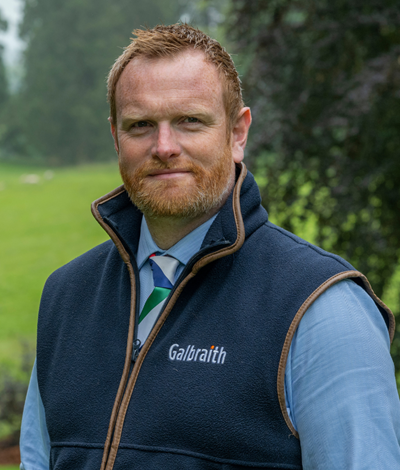Farmers and landowners are disappointed by changes to the agricultural property relief and business property relief as applied to inheritance tax, announced in last week’s Budget.
The Chancellor Rachel Reeves announced that the first £1m of combined business and agricultural assets will continue to attract no inheritance tax, but for assets over £1m inheritance tax will apply with 50% relief, which will essentially result in an effective rate of 20% on the remaining business and agricultural assets valued over £1,000,000.
The new legislation will be in force from April 2026, which at least provides a period of breathing space.
Given the rise in land values in recent decades, based primarily on the need for productive farmland in the UK, the threshold for these changes is seen by the industry as too low – there are a significant number of commercially productive farms and estates which will come within the sphere of this new legislation in the UK, being valued at more than £1m.
When it comes to the larger landholdings and more complex rural businesses, they will have a value well in excess of that figure.
Although the underlying value of agricultural land continues to grow over time, the profit margins in comparison are very low, as costs, inflation and low farm-gate prices have a combined effect.
NFU reports that most farms are operating on margins of less than 1 per cent.
Many Galbraith clients are concerned, following the Budget, that the UK government seems not to understand the agricultural sector and ultimately the unintended consequences of the application of the new tax measures post-April 2026.
The Chancellor asserted that she wanted to protect ‘family farms’ but these measures have not delivered what she intended.
The assessment made by the government that three quarters of family farms would be valued below £1m appears at odds with current market values.
There is little that can be bought for £1m and this would be lucky to accommodate a smallholding. The average farm is around 220 acres and, with an average land price of £7k/ac, this amounts to £1,540,000 and makes no allowance for any buildings. Neither does this make any allowance for moveables such as stock valuations, growing crops, plant and machinery or any goodwill.
A £3m farm will now potentially be subject to an inheritance tax bill of £400,000. At current interest rates and over a 15-year period, the succeeding family would need to find £45,871 per annum to finance the capital and interest repayments in order to meet the tax liability. As margins are so tight currently, this will place an exceptional burden on these families and in some cases render the business unviable.
It is particularly challenging for the industry to accept, at a time when landowners are contributing so much to the environmental and economic objectives set out by the government for the future. To name but a few – sustainable food production, hedgerow planting, soil and water quality initiatives, woodland creation, peatland restoration, bird surveys and water course management are all undertaken as part of good agricultural practice.
Farmers who have not yet taken advice from a specialist should do so at their earliest opportunity. The extent of the inheritance tax payable may be influenced by a variety of factors including the structure of the business and whether assets are held within a partnership structure, by individuals, or by a corporate structure.
The rules applying to potentially exempt transfers remain in place currently. This would indicate that a gift to a family member within one’s lifetime should still be exempt from inheritance tax, under certain conditions.
Succession planning has always been tricky to address in farming families, but our experience has been that it can be an open and honest discussion – as well as empowering for all generations and one that should not be put off for ‘another day’.
Bringing family members into the farming partnership can be an enormously positive development for a variety of reasons. This would mitigate the inheritance tax liability but it very much depends on the circumstances of each family. A £5m asset with five family members may appear straightforward but it is of course far more complicated in many cases. For farmers with few descendants or with members of the family who are not intending to pursue a career in farming, the situation becomes more difficult.
We understand that most farmers are too busy with the day to day running of the farm to consider retirement or what the future may hold, but moments of reflection and time dedicated to the financial planning of the business is time well spent.
The changes announced in the Budget should provide the industry with the impetus to really assess all the elements of the farm and how best to ensure we have taken account of any changes that may be beneficial in the long-term for farming families, their land, and the next generation.



